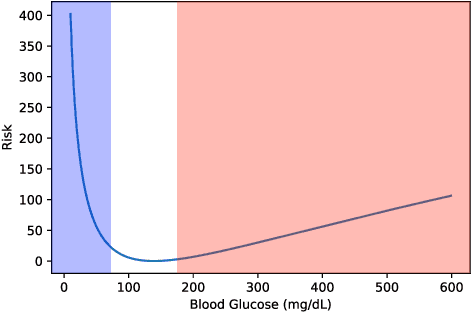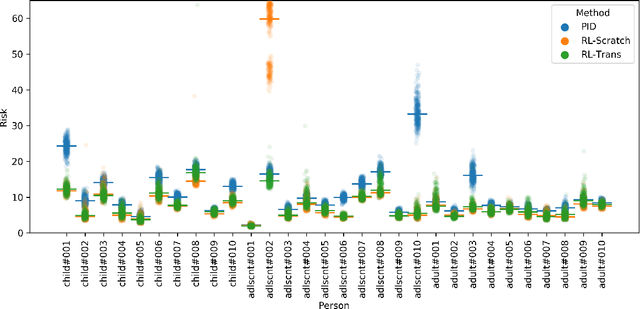Deep Reinforcement Learning for Closed-Loop Blood Glucose Control
Paper and Code
Sep 18, 2020



People with type 1 diabetes (T1D) lack the ability to produce the insulin their bodies need. As a result, they must continually make decisions about how much insulin to self-administer to adequately control their blood glucose levels. Longitudinal data streams captured from wearables, like continuous glucose monitors, can help these individuals manage their health, but currently the majority of the decision burden remains on the user. To relieve this burden, researchers are working on closed-loop solutions that combine a continuous glucose monitor and an insulin pump with a control algorithm in an `artificial pancreas.' Such systems aim to estimate and deliver the appropriate amount of insulin. Here, we develop reinforcement learning (RL) techniques for automated blood glucose control. Through a series of experiments, we compare the performance of different deep RL approaches to non-RL approaches. We highlight the flexibility of RL approaches, demonstrating how they can adapt to new individuals with little additional data. On over 2.1 million hours of data from 30 simulated patients, our RL approach outperforms baseline control algorithms: leading to a decrease in median glycemic risk of nearly 50% from 8.34 to 4.24 and a decrease in total time hypoglycemic of 99.8%, from 4,610 days to 6. Moreover, these approaches are able to adapt to predictable meal times (decreasing average risk by an additional 24% as meals increase in predictability). This work demonstrates the potential of deep RL to help people with T1D manage their blood glucose levels without requiring expert knowledge. All of our code is publicly available, allowing for replication and extension.
 Add to Chrome
Add to Chrome Add to Firefox
Add to Firefox Add to Edge
Add to Edge